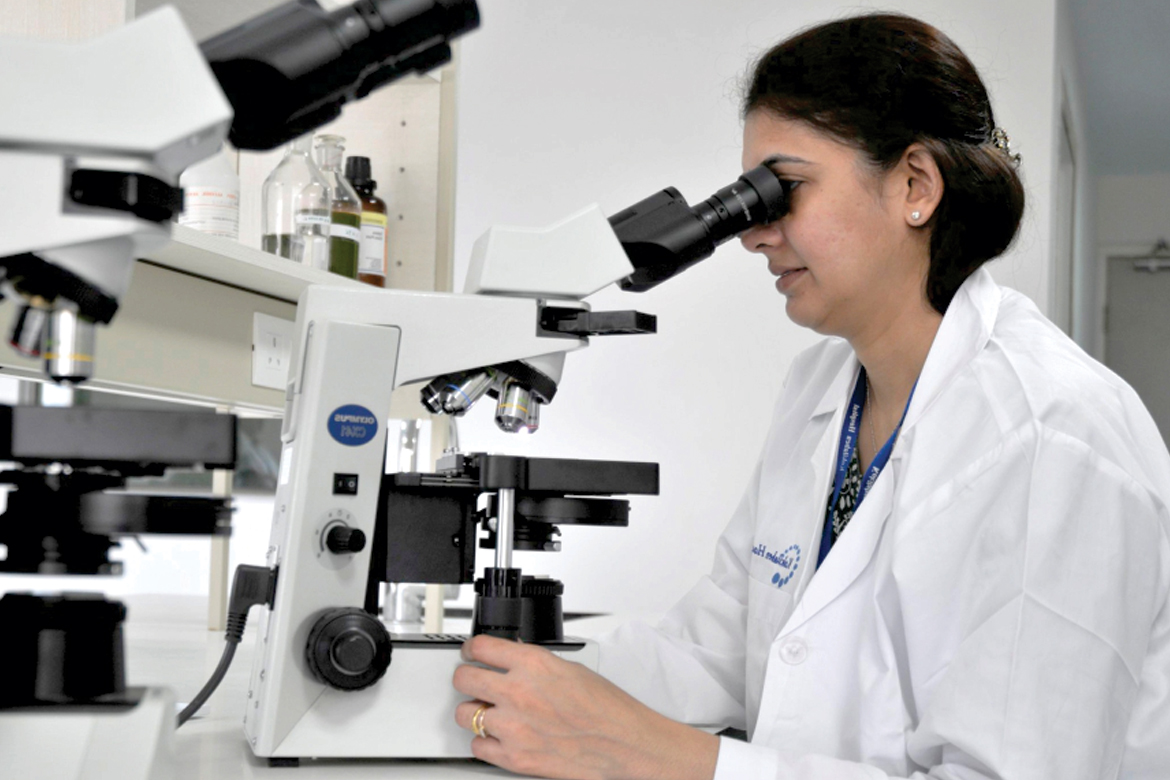Thalassaemia, the most common inherited single gene disorder in the world, are a diverse group of genetic blood diseases characterised by absent or decreased production of normal haemoglobin, resulting in anaemia of varying degree.
Thalassaemia is caused by a mutation or deletion of the genes that control one or more of 4 globin chain production. This leads to decreased synthesis of haemoglobin and clinical manifestation of thalassaemia. The quantity and properties of normal globin chain aggregates determine the characteristics and severity of thalassaemia.
A child inherits haemoglobin genes from both parents. For example, if both parents have beta thalassaemia trait, there is a 1 in 4 chance of the child having normal haemoglobin genes; a 1 in 2 chance of the child having beta thalassaemia minor; and a 1 in 4 chance that the child will have beta thalassaemia major or intermedia.

DIFFERENT TYPES OF THALASSAEMIA
The main types of thalassaemia are called alpha thalassaemia and beta thalassaemia. There are some rarer types too.
- Thalassaemia minor
- Beta Thalassaemia Major
- Beta Thalassaemia intermedia
- Hb H disease
- Hb Barts
- Sickle Cell/Beta Thalassaemia
Diagnosis
The diagnosis is made by a blood test. Beta thalassaemia can diagnose on test called High Performance Liquid Chromatography (HPLC) showing different characteristic patterns. This is done on the patient and their parents. In some cases, extra tests, such as DNA (genetic) tests are performed to diagnose the exact type of thalassaemia. Alpha thalassaemia is diagnosed from molecular gene test from blood. If there is a history of previous child with thalassaemia major, or both the partners are thalassaemia minor, prenatal testing is advised as thalassemia major birth can be best prevented. A prenatal test (on the unborn baby) can be done from 10 weeks of pregnancy onwards, depending on the type of the test used. The usual tests offered are Chorioni c V illus Sampling (CV S) or amniocentesis. It involves ultrasound guided aspiration of fetal sample for testing thalassaemia.
Treating Thalassaemia
- Treatment involves regular blood transfusions that must be given to maintain pre-transfusion haemoglobin level of 9 g/dl. Blood transfusion reactions and allo-immunisation due to repeated transfusion are leukoreduced by using pre-storage leukodepletion (preferred) or by using bedside leukocyte filter
- Incase of hypersplenism, where the spleen may become so enlarged or overactive causing abdominal discomfort due to size and can lead to increased blood transfusion frequency, splectomy is performed
- Iron overload can be controlled with regular medications reducing iron level. It is called iron chelation. It is done with injections of Desferal or nowadays with oral drug called Deferasirox (Asunra/Defrijet)
- Bone Marrow Transplant from HLA matched sibling is the only curative therapy for thalassemia. Best results of 80-85% are achievable if done early in the course of disease before complications set in. With the available transplant centres and experts in India, this has become most cost effective way of treating thalassaemia major
- Prenatal fetal testing while mother with thalassaemia is pregnant is crucial to prevent baby birth from this disease
The Bone Marrow Transplant Unit at Kokilaben Hospital is dedicated to provide outstanding care and support to paediatric and adult patients who can be helped by transplantation therapy. The expert team at the hospital specialises in performing allogeneic and autologous bone marrow, peripheral stem cell and umbilical cord blood transplants and providing best possible care to the patients.
 Back to Site
Back to Site